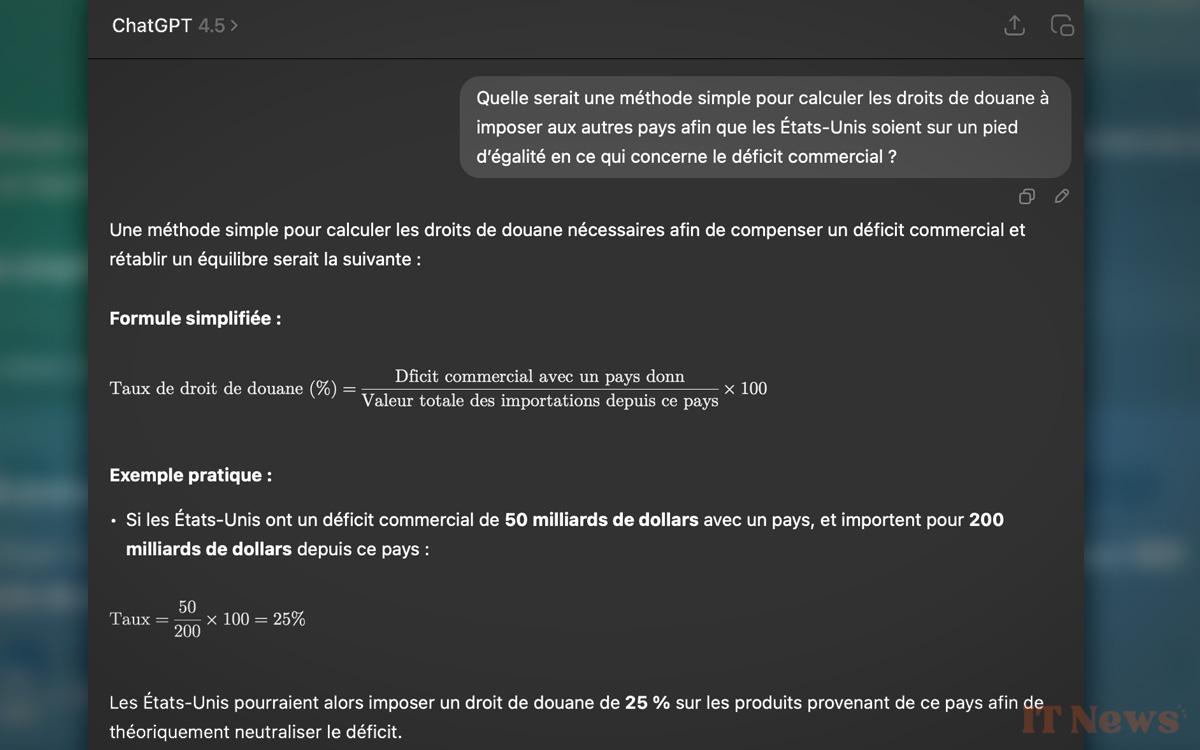While the calculation put forward by Donald Trump to explain each of the tariff increases targeting all the economies of the planet is described as fanciful by many economists, some voices are raising a question that is ultimately not so far-fetched... what if the President of the United States had used ChatGPT?
The White House's announcement caused an immediate shock, all over the world. The amounts of the new customs duties desired by Donald Trump are indeed perceived as a challenge for the global economy – which is officially entering a phase of deglobalization. A situation that should immediately cause a decline in trade and an increase in the price of consumer goods. This reversal is already plunging most stock market indices into the red, starting with the Nasdaq and the Dow Jones.
This tariff war strategy is raising questions among economists. Indeed, we recall a famous precedent. The Hawley-Smoot Act, promulgated in the United States on June 17, 1930, at the beginning of the Great Depression by President Herbert Hoover, had implemented customs duties of 40% on average on some 20,000 types of goods from abroad. Economists then predicted a rise in consumer prices that would have a significant impact on American lives.
Why Donald Trump's Tariffs Look Like ChatGPT
The economists' pessimistic scenario was quickly confirmed and crippled the economy until the eve of World War II. Other countries quickly reacted with particularly costly retaliatory measures. The US economic situation continued to worsen with no prospect of recovery. This had a devastating impact on the White House tenant. Unable to resolve the crisis, the Republican president was defeated by Franklin D. Roosevelt in the following elections.
In 2025, Donald Trump presents the effects of this law by following alternative facts that only he knows the secret to. He claims that the Great Depression would not have happened if high tariffs had been maintained. Before unveiling this week a list of countries saddled with particularly disparate (but overall very high) rates.
Beyond the strategy itself, it is the calculation of the rates itself that raises questions. If we summarize the formula, which seems rather scholarly, published by the White House, it involves taking the trade deficit, dividing it by the country's import volume, then dividing this rate by two. All this based on data that doesn't seem entirely official. The average customs tariff rate becomes so high that we have to go back to the 1900s to find something comparable.
Above all, a doubt arises... did the American president use ChatGPT to arrive at this strategy? It's difficult to fully prove. However, as Newsweek reports, there is something troubling about the formula made official by the White House: when OpenAI's models are asked to establish a global customs strategy that restores the trade balance, the AI tends to propose the same thing...
We also noticed this when we submitted the prompt discovered by American political journalist Steve Bonnell to ChatGPT ourselves – you can find it with the AI's response on the front page of this article. We note that the model does not fail to point out that the calculation itself is simplistic and ignores the risk that most countries hit by high customs duties are likely to respond with similar measures targeting the United States. A warning that it would undoubtedly have been wise to take better account of...




0 Comments